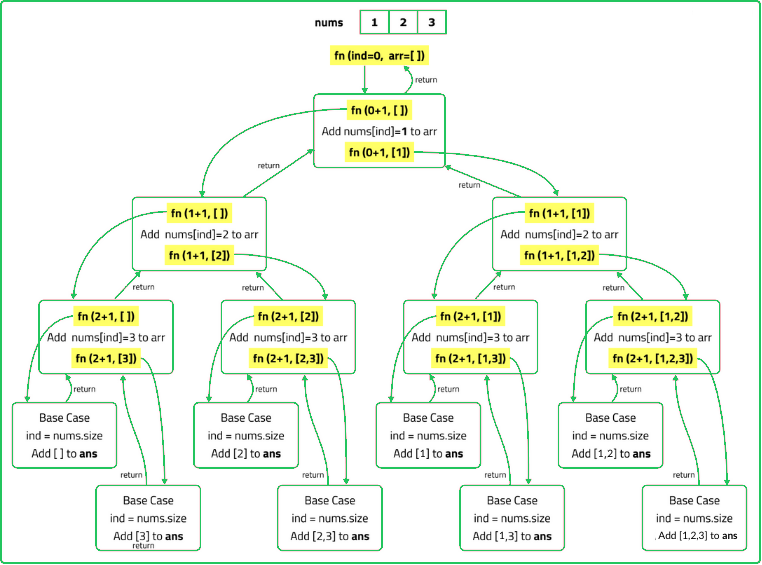Power Set
Recursion
Implementation Problems
Easy
- The problem of finding all possible subsets from a set, also known as the power set, is an important concept in many areas of software development
- In database technologies, such as SQL, this concept is used in designing queries that require combinations of data, such as generating all combinations of products that can be bundled together
- In Machine Learning, power sets are used in feature selection, where combinations of different features are tested to see which set gives the best predictive accuracy
- Meanwhile in Software Testing, generating all possible subsets of a feature set aids in creating exhaustive test cases which helps find potential bugs or issues
Given an array of integers nums of unique elements. Return all possible subsets (power set) of the array.
Do not include the duplicates in the answer.
Examples:
Input : nums = [1, 2, 3]
Output : [ [ ] , [1] , [2] , [1, 2] , [3] , [1, 3] , [2, 3] , [1, 2 ,3] ]
Input : nums = [1, 2]
Output : [ [ ] , [1] , [2] , [1,2] ]
Input : nums = [0]
Constraints
- 1 <= nums.length <= 10
- -10 <= nums[i] <= 10
Hints
- Use recursion to build subsets by deciding for each element whether to include it in the current subset.
- "At each recursive step: Add the current subset to the result. Recursively add subsets including the next element."
Company Tags
Wayfair
Dropbox
Red Hat
Swiggy
Bain & Company
Roche
Zynga
Nutanix
Morgan Stanley
Freshworks
Visa
MongoDB
Seagate Technology
Bloomberg
Bungie
Optum
Boston Consulting Group
Micron Technology
Splunk
HCL Technologies
Activision Blizzard
DoorDash
Philips Healthcare
Riot Games
JPMorgan Chase
TCS
Cognizant
Accenture
Infosys
Capgemini
Wipro
